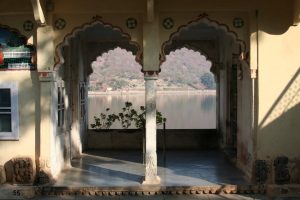 This brilliant photograph, by Masahiro Hayata, combines the spiritual glory of a gothic vault with the transcendent luminance of a stained glass window.
This brilliant photograph, by Masahiro Hayata, combines the spiritual glory of a gothic vault with the transcendent luminance of a stained glass window.
The avenue is formed with the oldest surviving tree species on earth, the only survivor from prehistoric times. The Ginkgo was widespread 270 million years ago but disappeared – except from a small area in Central China. The seed was taken to Europe, from a Japanese temple garden, by Engelbert Kaempfer in 1692. Kaempfer was a German naturalist, traveller and physician who wrote an important account of Japan and also made the first accurate drawings of Persian gardens.
The 300m Ginkgo Avenue is in the garden of the Meiji Jingu (shrine) in Tokyo. It commemorates the 1867 Meiji Restoration, which led directly to the astonishing modernization of Japan: the landscape architecture of this photograph involves many interests.


 More design (cities, architecture, landscapes, gardens etc) should be more context-sensitive:
More design (cities, architecture, landscapes, gardens etc) should be more context-sensitive: